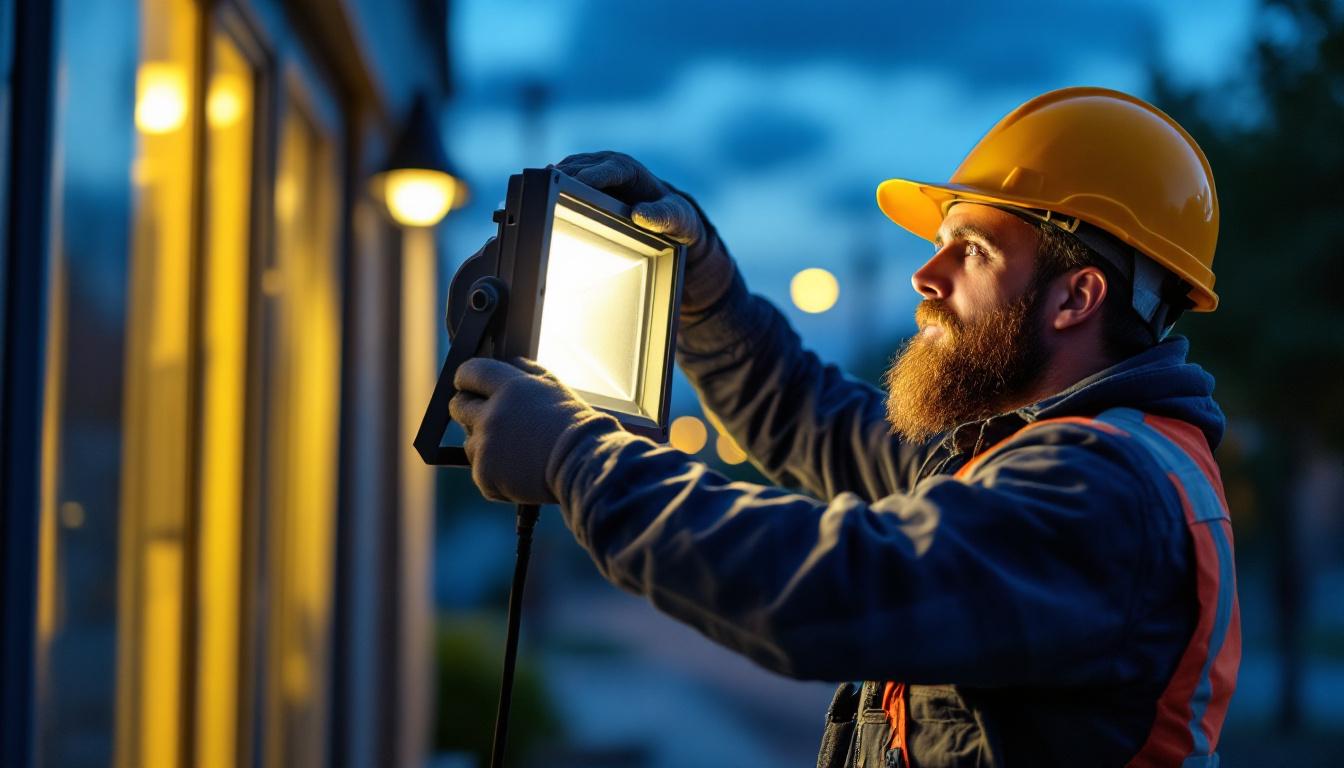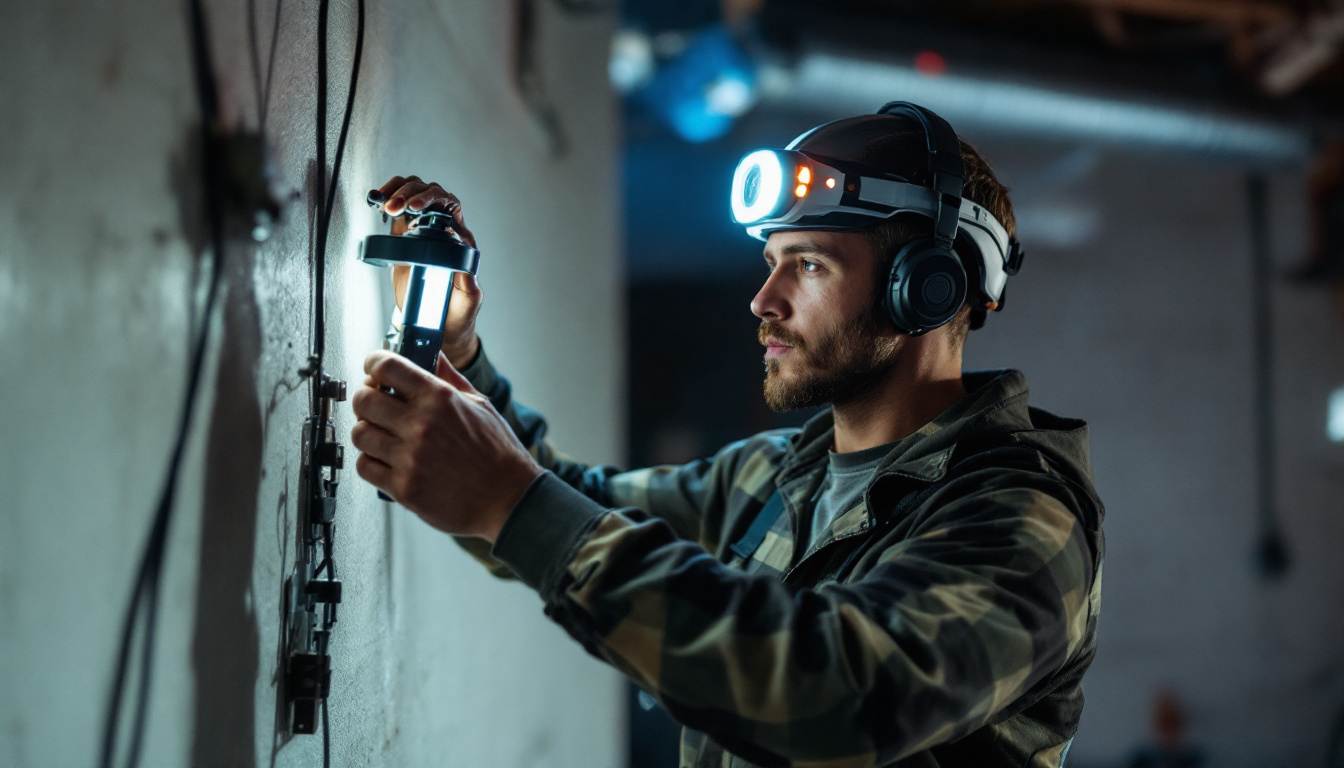
In the ever-evolving world of lighting design and installation, the choice of lighting fixtures can make or break a project. Among the various options available, can lighting bulbs have emerged as a staple for lighting contractors. These versatile fixtures not only provide aesthetics but also enhance functionality, making them an essential tool in the contractor’s arsenal. This article delves into the significance of can lighting bulbs and how they contribute to the success of lighting contractors.
Can lighting, also known as recessed lighting, offers a sleek and unobtrusive way to illuminate spaces. Unlike traditional light fixtures, can lights are installed into the ceiling, allowing for a clean and modern look. This versatility makes them suitable for various applications, from residential to commercial projects.
One of the most appealing aspects of can lighting bulbs is their adaptability. They can be used in a variety of settings, including living rooms, kitchens, offices, and retail spaces. The ability to adjust the direction of light makes them particularly useful for highlighting architectural features or artwork, creating a dynamic atmosphere.
Moreover, can lights can be installed in new constructions or retrofitted into existing spaces, providing contractors with flexibility in their design choices. This adaptability allows lighting contractors to cater to a wider range of client needs and preferences, ultimately enhancing their service offerings. In homes, for instance, can lights can be strategically placed to create a cozy ambiance in a family room or to provide bright, focused light in a kitchen workspace. In commercial settings, they can be used to create an inviting atmosphere in a boutique or to ensure proper lighting in an office environment, thereby boosting productivity and employee satisfaction.
In today’s market, energy efficiency is a significant consideration for both contractors and clients. Can lighting bulbs, especially those using LED technology, consume significantly less energy than traditional incandescent bulbs. This not only reduces electricity bills but also contributes to a more sustainable environment.
Additionally, the longevity of LED can lights means fewer replacements and maintenance costs over time. By promoting energy-efficient solutions, lighting contractors can position themselves as environmentally conscious professionals, appealing to a growing demographic that values sustainability. Furthermore, many LED can lights come with adjustable brightness settings and color temperatures, allowing users to customize their lighting experience to suit different moods or tasks. This level of control not only enhances the functionality of the space but also adds an element of sophistication, making can lighting a preferred choice for modern design enthusiasts.
Beyond functionality, can lighting bulbs play a crucial role in enhancing the aesthetic appeal of a space. The subtlety of recessed lighting allows for a seamless integration into the overall design, making it a favorite among architects and interior designers. This unobtrusive style not only maintains the clean lines of modern architecture but also provides versatility, allowing for various design themes to shine through without the distraction of bulky fixtures.
Can lighting can be strategically placed to create various moods and atmospheres. By adjusting the brightness and color temperature of the bulbs, contractors can design spaces that feel warm and inviting or bright and energizing. This ability to manipulate light is invaluable in settings such as restaurants, retail stores, and homes. For instance, a cozy café can utilize warmer tones to create an intimate setting, encouraging patrons to linger, while a vibrant retail space might opt for cooler, brighter lights to energize shoppers and enhance product visibility.
Moreover, the use of dimmable can lighting allows for further customization, enabling clients to adjust the lighting according to their needs. This feature not only enhances user experience but also showcases the contractor’s commitment to delivering tailored solutions. In addition, integrating smart lighting systems can provide even more flexibility, allowing users to control their environment through mobile apps or voice commands, thus adapting the ambiance to suit different activities or times of day effortlessly.
Can lights can effectively highlight architectural elements, artwork, or decorative features within a space. By strategically positioning these fixtures, contractors can draw attention to specific areas, creating focal points that enhance the overall design. For example, placing can lights above a stunning piece of artwork can create a gallery-like atmosphere, making the art the star of the show, while also providing essential illumination for appreciation.
This capability is particularly beneficial in high-end residential projects or commercial spaces where aesthetics play a critical role in attracting customers. By leveraging can lighting, contractors can elevate the perceived value of a project, leading to greater client satisfaction and potential referrals. Furthermore, the use of adjustable fixtures allows for even greater precision in highlighting features, ensuring that every detail is perfectly illuminated, from textured walls to intricate moldings, thereby creating a layered and dynamic visual experience that captivates and engages viewers.
While the aesthetic and functional benefits of can lighting bulbs are clear, lighting contractors must also consider the technical aspects of installation. Understanding the various components and requirements is essential for ensuring a successful project.
When selecting can lighting bulbs, contractors must consider factors such as wattage, color temperature, and beam angle. Different projects may require different types of bulbs to achieve the desired effect. For instance, a warm white light may be more suitable for residential spaces, while cooler tones might be preferred in commercial settings.
Contractors should also stay informed about the latest advancements in lighting technology. The rapid evolution of LED technology means that new options are constantly emerging, providing opportunities for improved performance and efficiency.
Proper installation is critical to the performance of can lighting bulbs. Contractors must ensure that the fixtures are correctly positioned and securely mounted to avoid issues such as flickering or inadequate lighting. Furthermore, adhering to local building codes and regulations is essential to ensure safety and compliance.
Additionally, considering the spacing between fixtures is vital for achieving uniform lighting. Overcrowding can lead to harsh shadows, while too much space can result in dark spots. A well-planned layout not only enhances the functionality of the lighting but also contributes to the overall aesthetic appeal of the space.
Lighting contractors play a pivotal role in educating clients about the benefits and options available with can lighting bulbs. Engaging clients in the decision-making process fosters trust and satisfaction, ultimately leading to successful project outcomes.
Contractors should take the time to explain the different types of can lighting bulbs available, including their energy efficiency, longevity, and aesthetic benefits. Providing clients with a clear understanding of their options empowers them to make informed decisions that align with their vision and budget.
Moreover, discussing the long-term benefits of investing in quality can lighting can help clients appreciate the value of their choices. This education can lead to increased client satisfaction and a higher likelihood of repeat business and referrals.
One effective way to engage clients is by showcasing previous projects that utilized can lighting. Visual examples can help clients envision the potential of their spaces and inspire confidence in the contractor’s expertise.
Utilizing before-and-after photos, case studies, or even virtual tours can effectively demonstrate the impact of can lighting. This approach not only highlights the contractor’s skills but also reinforces the value of investing in quality lighting solutions.
The lighting industry is continuously evolving, with new trends and technologies emerging regularly. Staying ahead of these trends is crucial for lighting contractors looking to maintain a competitive edge.
As smart home technology becomes increasingly popular, integrating smart lighting solutions with can lighting bulbs is a growing trend. This technology allows users to control their lighting remotely, adjust brightness, and even change colors through smartphone apps or voice commands.
Contractors who embrace smart lighting solutions can offer clients enhanced convenience and customization options, setting themselves apart in a crowded market. Understanding the technical requirements for smart lighting integration will be essential for successful installations.
With a growing emphasis on sustainability, lighting contractors are expected to adopt eco-friendly practices in their projects. This includes using energy-efficient can lighting solutions and sourcing materials responsibly.
Contractors who prioritize sustainability not only contribute to environmental conservation but also appeal to clients who value green building practices. By positioning themselves as leaders in sustainable lighting solutions, contractors can attract a broader client base and enhance their reputation in the industry.
Can lighting bulbs have proven to be a key component in the success of lighting contractors. Their versatility, energy efficiency, and aesthetic appeal make them an invaluable tool for illuminating spaces effectively. By understanding the technical aspects, engaging clients, and staying informed about industry trends, lighting contractors can leverage can lighting to enhance their service offerings and achieve greater success in their projects.
As the demand for innovative and sustainable lighting solutions continues to grow, contractors who embrace the potential of can lighting will be well-positioned to thrive in a competitive market. Investing in knowledge, skills, and quality products will not only benefit contractors but will also lead to satisfied clients and successful projects.
Ready to elevate your lighting projects with the versatility and efficiency of can lighting bulbs? At LumenWholesale, we provide lighting contractors with the highest quality, spec-grade lighting products at unbeatable wholesale prices. Say goodbye to inflated markups and hello to superior lighting solutions that meet the highest industry standards. With our hassle-free bulk buying and free shipping, you can trust that you’re getting premium lighting at the best value — every time. Don’t compromise on quality or cost. Discover wholesale lighting at the best value today and light up your next project with confidence.

Discover expert tips and innovative ideas for lighting contractors on selecting and installing indoor hanging lanterns.

Discover the insider tips and expert strategies lighting contractors use to master commercial flood light installations.

Discover the secrets to mastering white light track installations with expert tips and strategies tailored for lighting contractors.

Discover how Light Head Light Head technology revolutionizes lighting installation projects by enhancing efficiency, precision, and design flexibility.